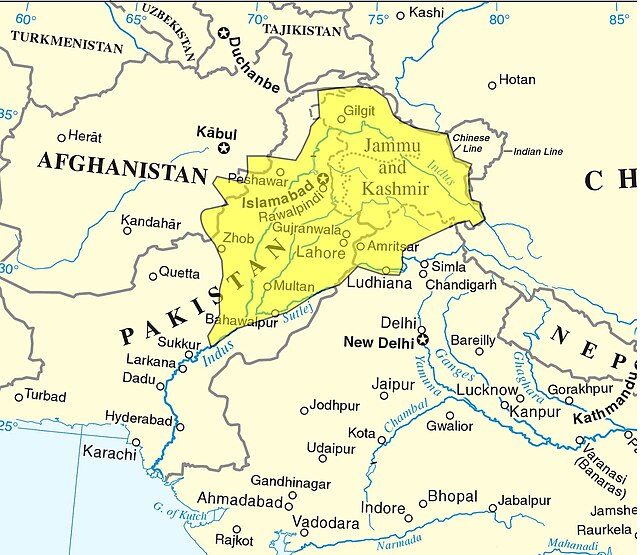Lakhori bricks are flat, thin, red burnt-clay bricks, originating from the Indian subcontinent that became increasingly popular element of Mughal architecture during Shah Jahan, and remained so till early 20th century when lakhori bricks and similar Nanak Shahi bricks were replaced by the larger standard 9"x4"x3" bricks called ghumma bricks that were introduced by the colonial British India.
Kos Minar, built with lakhori bricks hidden underneath lime mortar, along Grand Trunk Road at Taraori in Karnal district of Haryana, India.
Kos Minar, built with lakhori bricks, near the Tomb of Ali Mardan Khan at Lahore in present-day Pakistan.
Contemporary 9 × 4¼ × 2¾ inches bricks are similar in dimension to "Ghumma bricks" introduced by British raj in early 20th century to replace lakhorie bricks that were less than 3/4 in every dimension.
Sikh Empire at its largest spread in the north-west Indian subcontinent during 1839 CE; where usage of Nanak Shahi bricks became more popular.
Lala Chunnamal Ki Haveli is a rare haveli surviving in a well-preserved condition within the Old Delhi area.
Front view of the Chunnamal Haveli
The Common and Family Room at the Chunnamal Haveli
Gateway to Katra Neel







